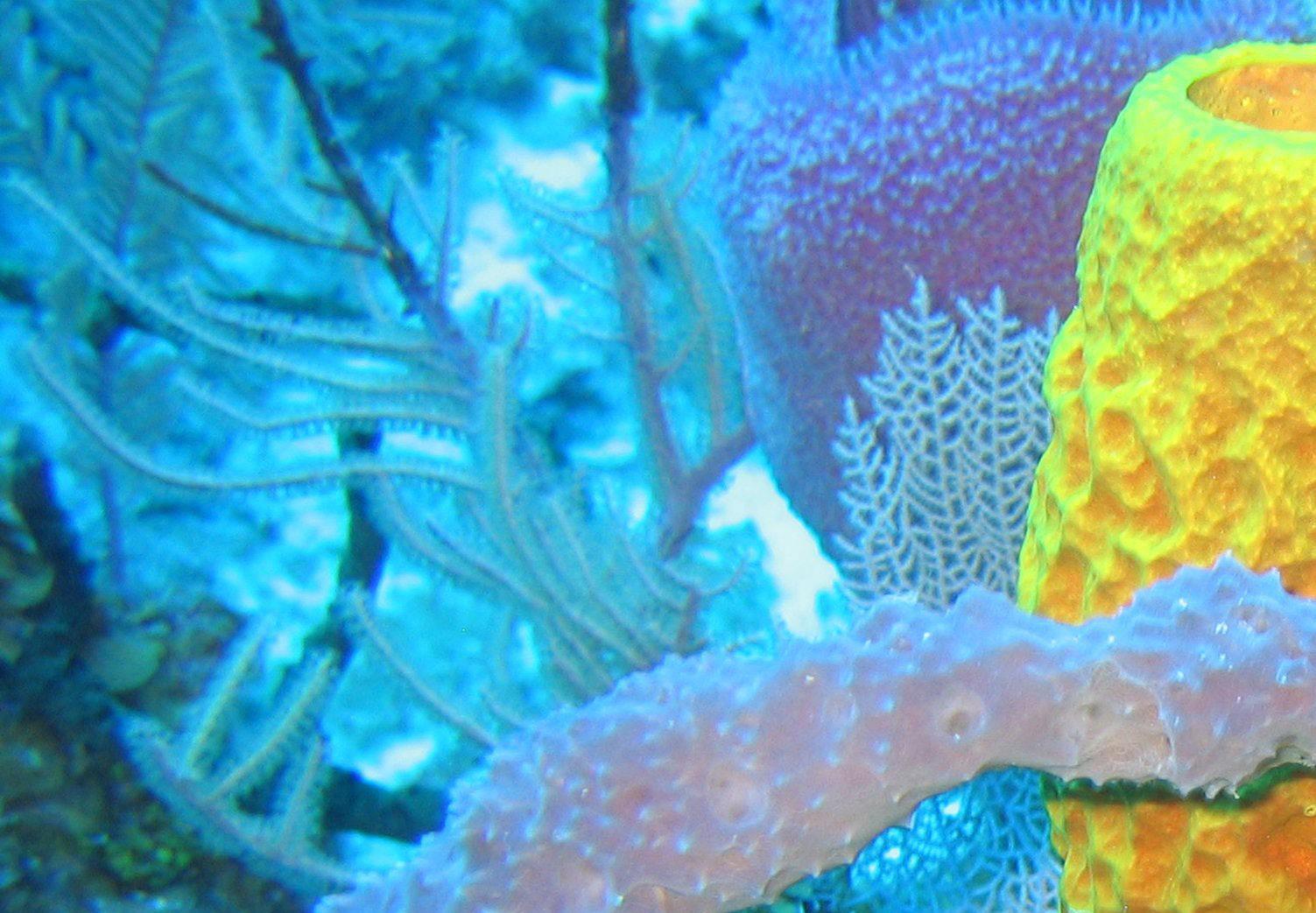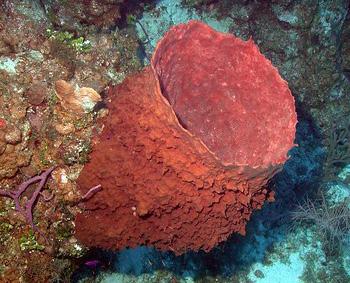
3 minute read
SUGAR EATING SPONGES
Did you know that while the ocean may taste salty, it is also full of sugar? Algae basking in the sunlight are sweet, really sweet. They actually make way more sugar than they need. The excess sugar spews into the water, saturating its surroundings and drawing sugar-loving sponges. In exchange for the treat, sponges supply the algae with nitrogen and other much needed nutrients. University of Amsterdam’s Dr. Jasper de Goeij reported in a current paper that sponges extract approximately ninety percent of their carbon from these organic sugars. This symbiotic relationship is a story of opposites attracting and creating a potentially unstoppable force. Sponges and algae are quite the productive partnership. This relationship is called a “sponge loop”- sponges transform the sugars they receive from algae into tissue and release nutrients for the algae, while simultaneously producing their own bodily smorgasboard from which animals like turtles can feast. According to Pawlik’s study of the Caribbean, the relationship between sponges and algae has enabled sponges to gain reef coverage of between fifteen to twenty percent. Sponges are slowly but surely taking over the reefs they inhabit. At this point, Pawlik predicts, “it’s likely that sponges have become the dominant animal on Caribbean reefs. They’re not coral reefs anymore; they’re algae-sponge reefs.”
How did they topple the coral as the reigning organisms of the reefs? It all started so innocently. Reefs are the structures built by corals as these sharp invertebrates claim as much room as possible. Sponges functioned as maintenance workers, breaking down bits and pieces to help keep the reef healthy. Over time, and with the giant heat lamp of life beating down, tensions arose. Some reef species flourish under the beating sun, some fight, and others have more of an inbred flight response. Many corals can’t handle the heat. As they began to weaken and die, sponges begin their ascent, buoyed by the sweltering conditions. As if in lock step, algae begin to pump out boatloads of glucose. Sponges, in return, gluttonously gobble their way to victory. Each bite they take of sugar coated coral is another munch on the bones of their competition. In this case, sweet fiends make the best conquerors. Some sponges are bigger sugar addicts than others. Dr. Achlatis discovered one particular sponge, C. orientalis, in 2016, by an island region of the Great Barrier Reef, that consumes an astounding amount of sugar. This sponge is a force of mass destruction. It launches surprise attacks, biding its time as it gradually dissolves the coral reef’s skeleton while encasing it. Dr. Archlatis describes “their cell’s membranes [as] form[ing] vesicles that venture out, intercept dissolved organic matter and [bring] it back for processing, as if the cell were drinking.” Stronger microscopes are needed to gain further insight into this; regard
Advertisement
By: Amiti Maloy, UHM MOP Student

less, it is a safe bet that these first-generation sugar-sippers are probably not unique in their powers. Some are saddened by this projected victory of sponges over corals, but not everyone. Florida State University sponge specialist Janie Wulff thinks that sponges and corals are still simpatico. According to her, sponges are still playing helper to their coral masters- “there is still no data showing that sponges are actually surging in abundance.”
Whose fault is it really? Wulff proposes “a simple explanation for why sponges are overgrowing corals and reefs: humans are dumping ever greater amounts of nutrients into coastal waters.” Pawlik, on the other hand, disagrees because even reefs in the Caribbean like those off “Saint Lucia have gone spongy even though they’re not polluted.” Clearly, more research on this subject is needed, but it is highly unlikely that human activity plays no role in the development of sponge-dominated reefs. However, all is not lost, and there is more to this situation than meets the eye. Over time, sponges coat coral skeletons and paint the space with vibrant yellows, oranges, and piercing purples. Sponges even add extra dimension to reefs by jutting out of openings and growing on top of another. Dr. Jasper de Goeij thinks that these eye-pleasing landscapes are the leading cause of underestimating sponges. He explains, “they bore themselves into the corals. Sometimes you see a large piece of coral, and if you smash it the whole inside of the coral is covered by excavating sponges.” So once the trick has been revealed, the reality sinks in: sponges are everywhere. What this means for reefs everywhere is unclear for the time being, but the fact is that our reefs are changing.

Barrel sponge. By: NOAA Photo Library, Flickr. For more information, check out: https://www.nationalgeographic.com/news/2017/12/sponges-choking-caribbean-coral-reefs-bleaching-environment.html or https://www.nytimes. com/2019/12/09/science/sponges-ocean-sugars.html.










